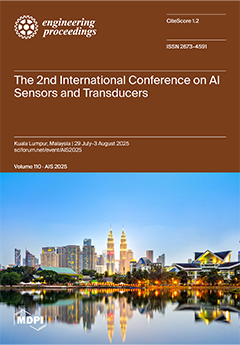Monitoring indoor air quality is vital for health, as CO
2 is a major pollutant. An automated system that accurately forecasts CO
2 levels can optimize HVAC management, preventing sudden increases and reducing energy waste while maintaining occupant comfort. Traditionally, such systems require
[...] Read more.
Monitoring indoor air quality is vital for health, as CO
2 is a major pollutant. An automated system that accurately forecasts CO
2 levels can optimize HVAC management, preventing sudden increases and reducing energy waste while maintaining occupant comfort. Traditionally, such systems require extensive datasets collected over months to train algorithms, making them computational expensive and inefficient. To address this limitation, an adaptive IoT-based platform has been developed, leveraging a limited set of recent data to forecast CO
2 trends. Tested in a real-world setting, the system analyzed parameters such as physical activity, temperature, humidity, and CO
2 to ensure accurate predictions. Data acquisition was performed using the Smartex WWS T-shirt for physical activity data and the UPSense UPAI3-CPVTHA environmental sensor for other measurements. The chosen sensor devices are wireless and minimally invasive, while data processing was carried out on a low-power embedded PC. The proposed forecasting model adopts an innovative approach. After a 5-day training period, a Generative Adversarial Network enhances the dataset by simulating a 10-day training period. The model utilizes a Generative Adversarial Network with a Long Short-Term Memory network as the generator to predict future CO
2 values based on historical data, while the discriminator, also a Long Short-Term Memory network, distinguishes between actual and generated CO
2 values. This approach, based on Conditional Generative Adversarial Networks, effectively captures data distributions, enabling more accurate multi-step probabilistic forecasts. In this way, the framework maintains a Root Mean Square Error of approximately 8 ppm, matching the performance of our previous approach, while reducing the need for real training data from 10 to just 5 days. Furthermore, it achieves accuracy comparable to other state-of-the-art methods that typically requires weeks or even months of training. This advancement significantly enhances computational efficiency and reduces data requirements for model training, improving the system’s practicality for real-world applications.
Full article




